Journal

528 Hz: The Frequency of the Universe
The 528 Hz frequency, often referred to as the is widely recognized for its profound healing properties. Rooted in ancient traditions and backed by modern science, this specific frequency is believed to resonate with the very fabric of the universe, promoting harmony and well-being at both physical and spiritual levels.
Read more...
Wind-Down Meditations Improve Quality of Sleep
Evening wind-down meditations involve setting aside a few minutes before bed to calm your mind and body. This can include various techniques such as mindfulness, deep breathing, guided imagery, or progressive muscle relaxation. The goal is to create a peaceful transition from a buzzing mind from the day's activities, to a state of relaxation that promotes restful sleep.
Read more...
Embracing Non-Attachment
In yoga, the concept of non-attachment is one of the yamas (ethical guidelines) outlined in Patanjali's Yoga Sutras. Non-attachment can be understood as the practice of letting go of the desire to possess or control things, including material possessions, relationships, or outcomes. It's about cultivating a sense of freedom from the need to cling to anything or anyone, and instead approaching life with an open heart and mind.
Read more...
Yoga in the Workplace: Boosting Productivity and Employee Well-being
In the fast-paced landscape of modern workplaces, the intersection between employee well-being and productivity has become a critical focal point for forward-thinking organizations. Yoga, with its multifaceted benefits, has emerged as a transformative tool in fostering both the physical and mental health of employees, ultimately elevating productivity. The practice's emphasis on mindfulness and stress reduction plays a pivotal role in mitigating workplace stressors. By incorporating yoga into the workday, employees gain a powerful coping mechanism, effectively managing stress and enhancing their resilience in the face of challenges.
Read more...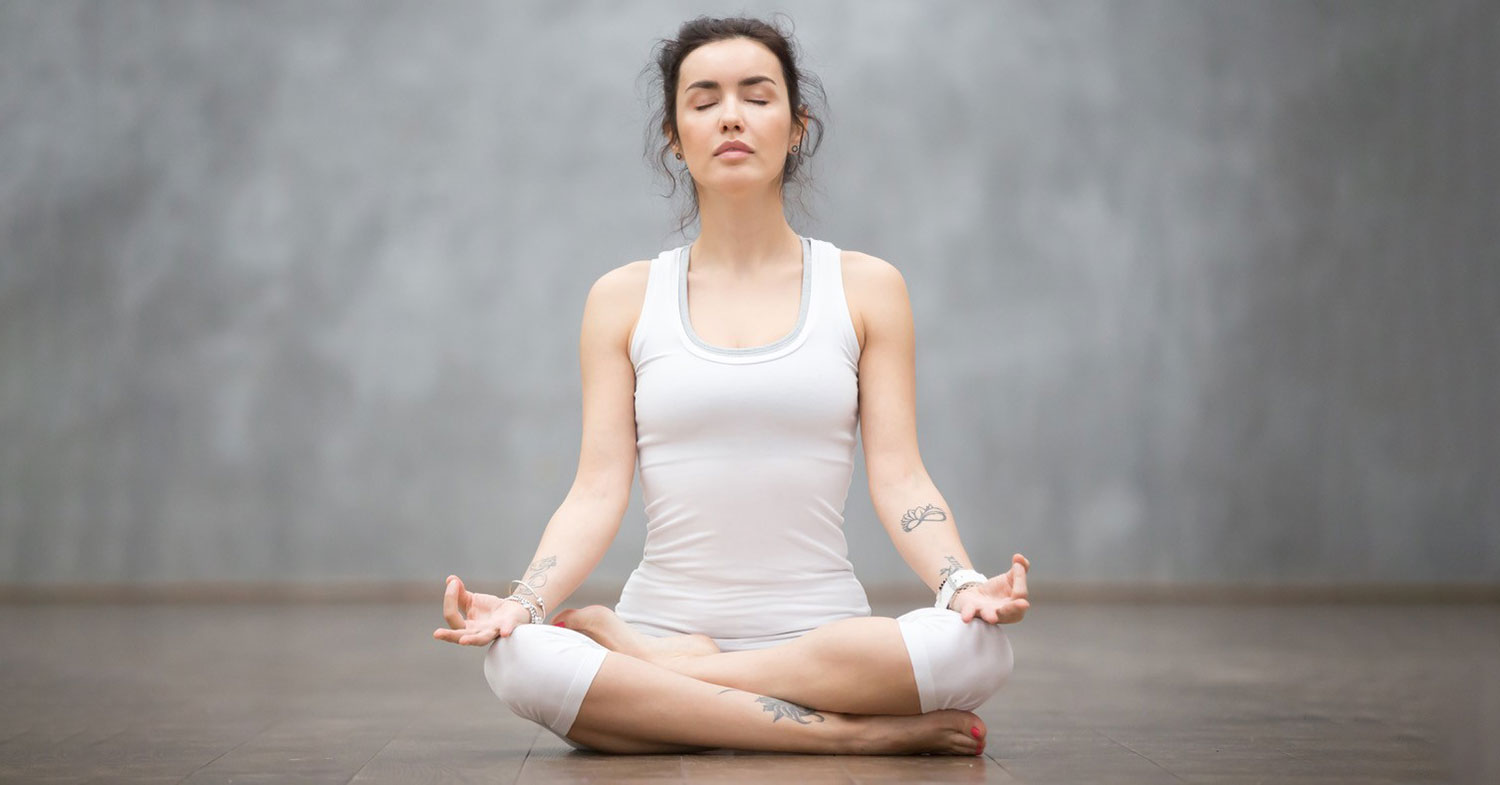
The Science Behind Yoga's Impact on Immune Function
Yoga's impact on immune function is rooted in the connection between the mind, body, and immune system. The practice's stress-relieving effects play a pivotal role in supporting immune health. Chronic stress has been linked to a weakened immune response, as stress hormones like cortisol suppress the activity of immune cells. Yoga, with its emphasis on mindfulness and relaxation, helps to lower cortisol levels, creating an environment conducive to optimal immune function.
Read more...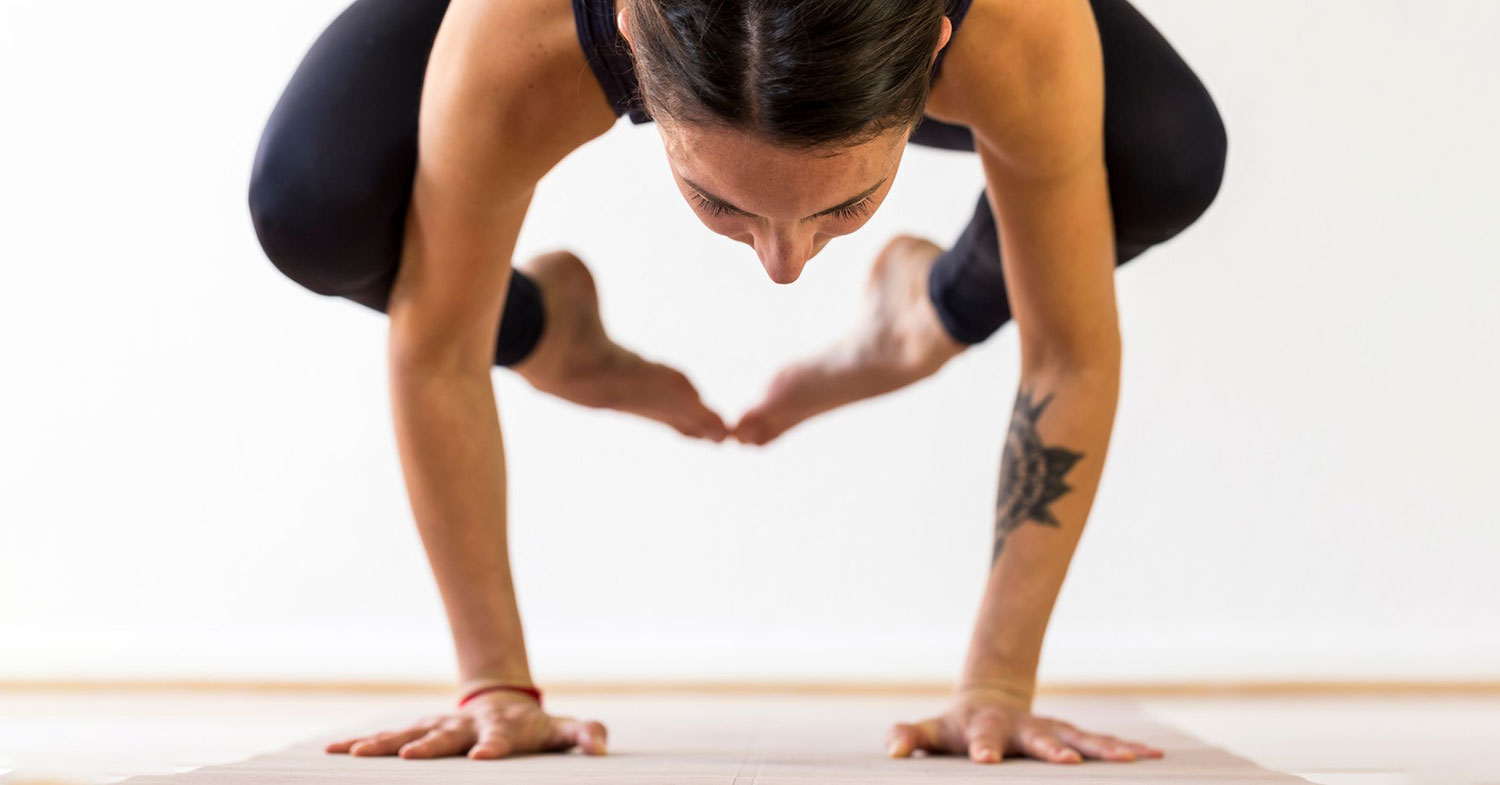
Exploring the Physiology of Yoga: How It Affects the Body at a Cellular Level
Yoga, beyond its physical postures and mindful breathwork has a profound positive impact on our cellular physiology. The practice induces a therapeutic sweat, facilitating the expulsion of toxins from our cells and offering a natural detox. Through the management of stress, yoga becomes a shield against the detrimental effects of cortisol, the stress hormone, ensuring our cells thrive in a harmonious environment. Studies suggest that the anti-inflammatory prowess of yoga eases cellular inflammation, addressing the root cause of various chronic conditions. The practice appears to slow down the aging process, preserving the length of telomeres and promoting cellular rejuvenation. This ancient discipline not only enhances our mental well-being but also nourishes our cells at a fundamental level, fostering a holistic approach to optimal health.
Read more...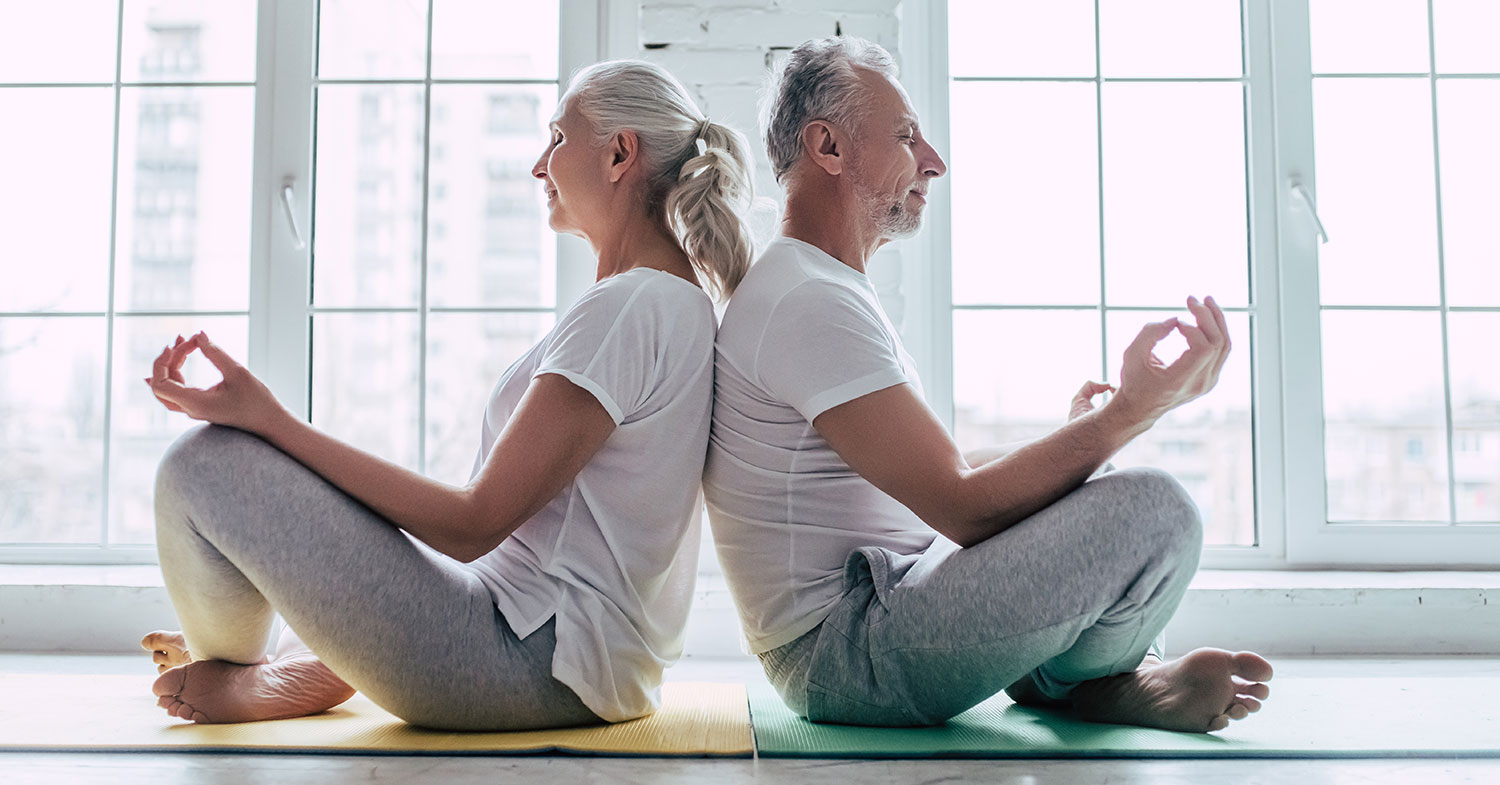
Reduce Risk of Alzheimer’s
The Life-Span Perspective focuses on human’s general course of development described as the pattern of movement that begins at conception and continues through the human life span. Read more...

Yoga for the Feminine Cycles
Menstruation and menopause are chapters of life where feelings are felt, your body temperature fluctuates and your world can feel upside-down. The YOGA365 App includes sequences to alleviate some of the suffering and symptoms caused by hormone imbalance, whether it be menopause or menstruation cycles.
Read more...
Benefits of Yoga for ADHD
ADHD, or Attention Deficit Hyperactive Disorder, is a very common neurodevelopment condition in which individuals are challenged with attention difficulty, hyperactivity, and possible impulsiveness. The circumstances differ from case to case. For some individuals with ADHD, it can be hard to focus and relax due to the inability to shut down the brain’s central executive network. There are various treatments to regulate and comfortably live with ADHD which can range from talk therapy to prescription medications and even exercising.
Read more...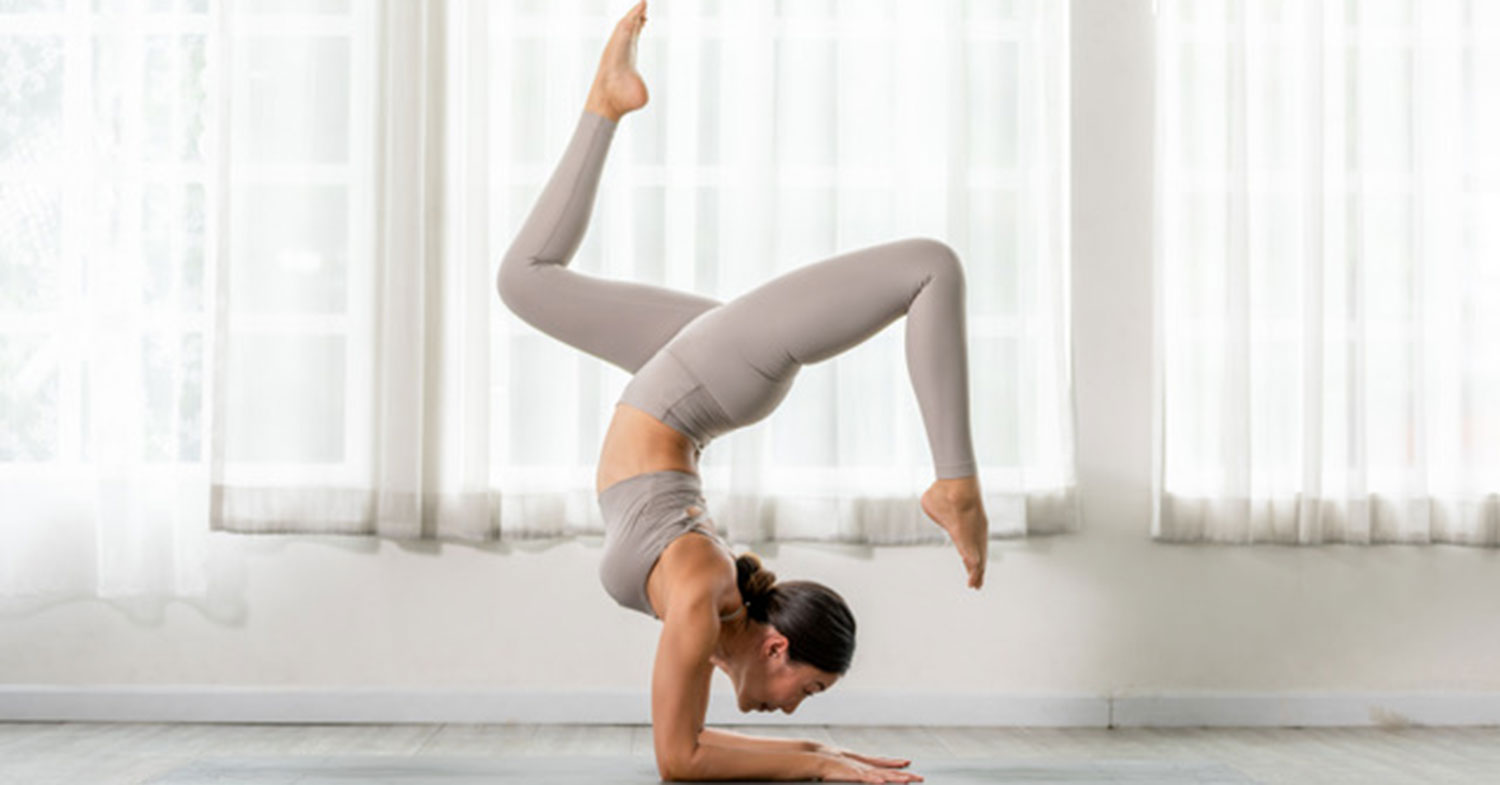
Creating and Forming Habits
The human brain is unique to our species. It functions in a way in which it continues to fascinate the world. Along with this fascination are the four stages of creating and forming habits. Even though our time is spent constantly buzzing around, there might seem like there is no time to focus on yourself or take the time to reward yourself.
Read more...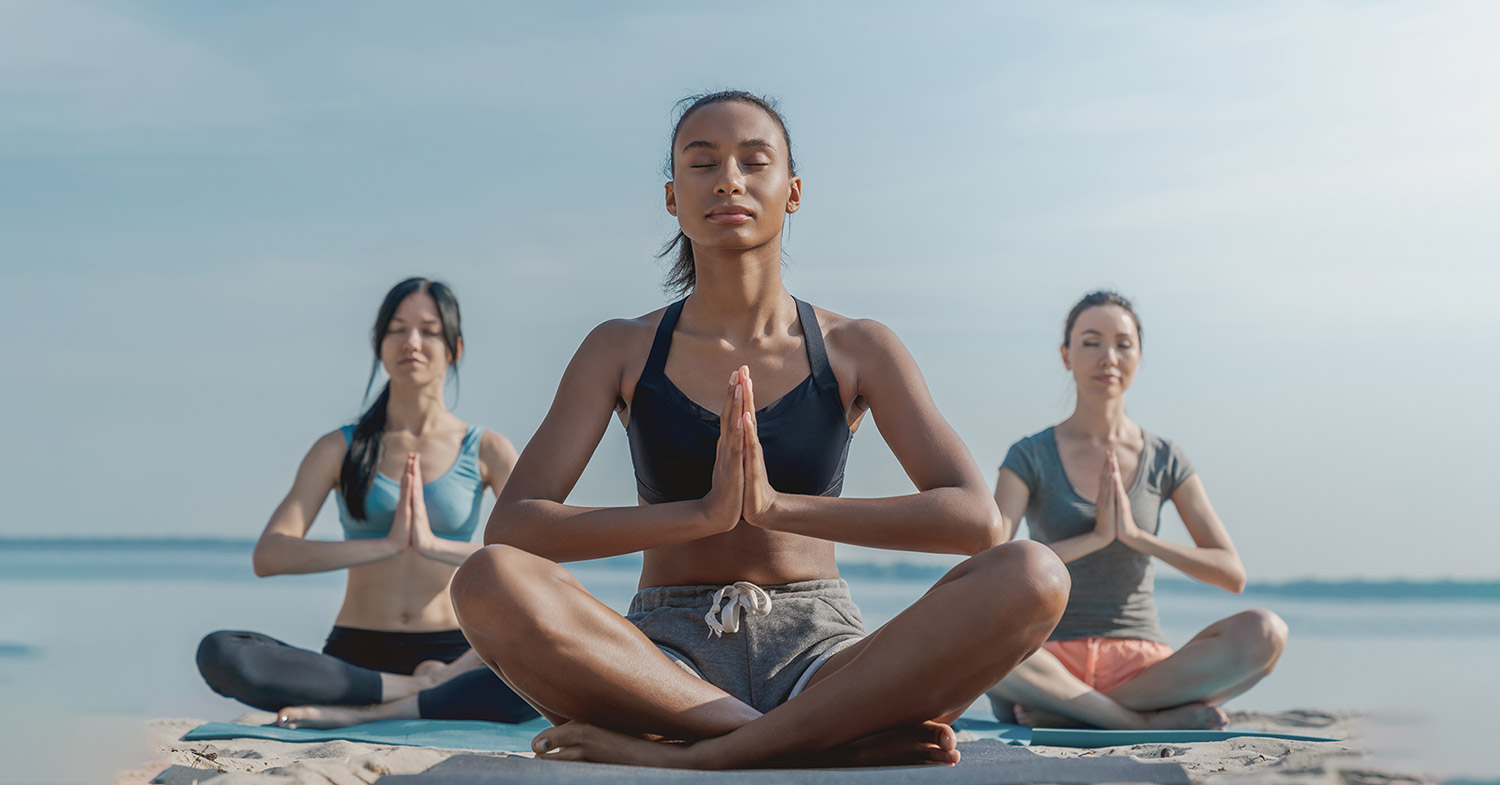
Athlete Recovery and Yoga
Athletes train hard and put their bodies through extensive work physically and mentally. Regardless of whether they are professional or beginners, athletes take on a journey filled with challenges that will bring about the ultimate victory for the mind and the body. Active individuals dedicate their time and effort to better themselves both inside and outside of training regimens.
Read more...
Balancing Chakras
The Sanskrit word chakra is translated to “spinning wheel” in the English language and is often referred to the subtle energy vortex within the human body. These bundles of wavering energy correspond to seven specific areas that ebb and flow from head to toe. The chakra system originated in India between 1500 and 500 BC. But where specifically? The Vedras. The Vedras is the earliest written record of chakras in ancient Indian text where it defines yoga philosophy.
Read more...
The Power of Hip-Opening Postures
Yoga has the power to open numerous pathways towards progress, stability and flexibility for the mind and body. Numerous individuals find themselves sitting and working on their computer for hours upon end. Muscles surrounding the pelvic area and hip joint tend to tense up and are yelling to be helped. Luckily, yoga has profound poses and sequences that can release muscle tension by stretching and strengthening those tight muscles. This includes yoga’s power to opening the hips with certain postures that will release tension and improve range of motion, circulation and even decrease back pain. Easing the pain and tension will allow for a more comfortable and active lifestyle.
Read more...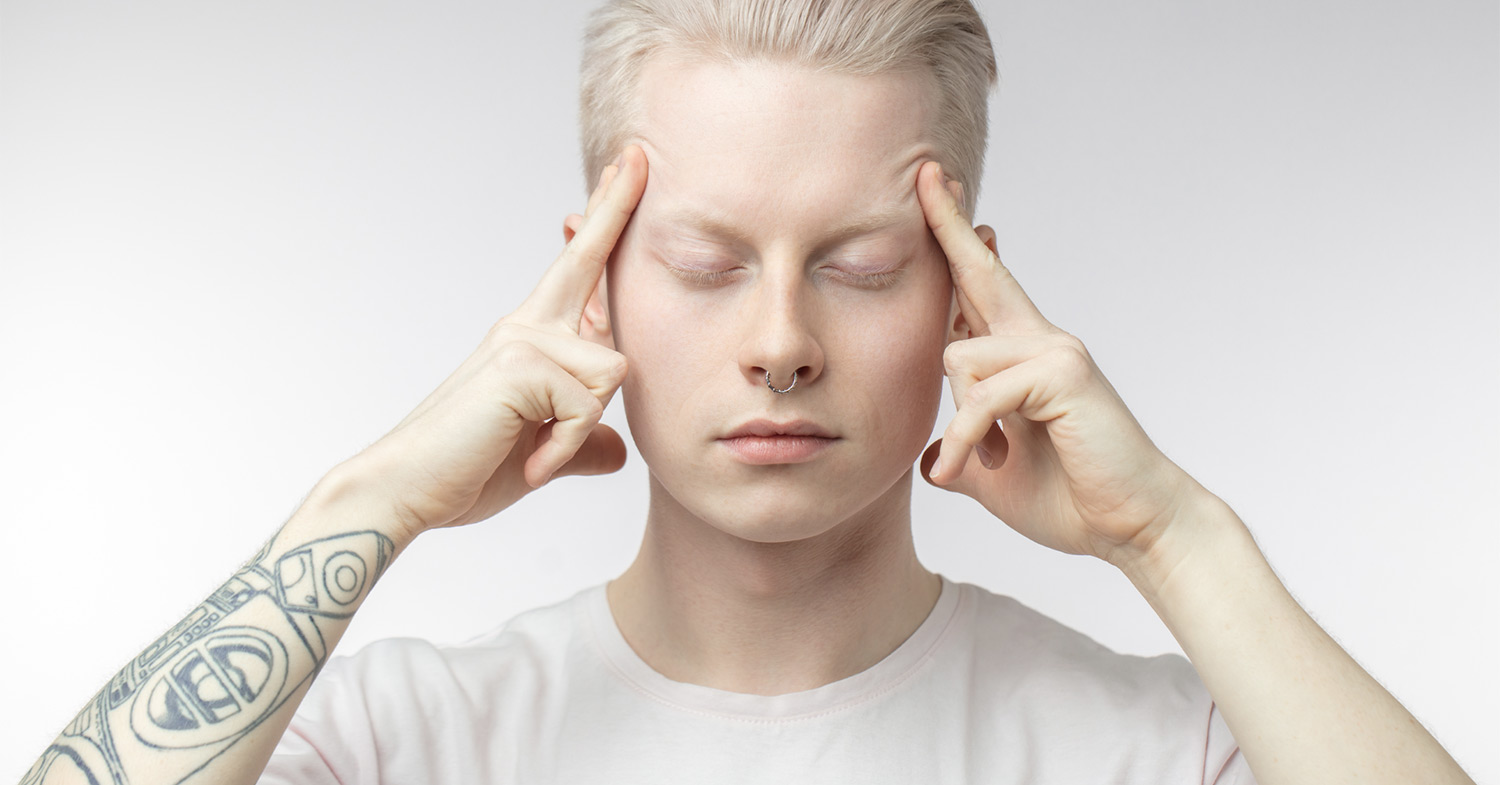
The Psychological Benefits of Yoga
For decades, creating and maintaining awareness towards the human breath is at the core of yoga’s foundation. “Ujjayi Pranayama” is a Sanskrit yogic respiratory exercise and phrase which translates into the Breath of Victory or Victorious Breath in English. To practice this exercise, keep your mouth closed during the full sequence time. Drop the tension from the mouth, teeth, jaw, and neck to focus on the flow in your throat as you deeply inhale and exhale. Types of deep breathing, like this technique, create a mind-body relationship that is extremely beneficial to improving individual’s mental states.
Read more...
Flow of Forgiveness
Our ability as humans to have a mind and body conscious connection is incredibly unique and intricately intertwined within our figure. Simply put, our thoughts, feelings and beliefs have an immense impact on our physical wellbeing. Mind-body therapies and mindfulness practices, like yoga, meditation and breathing are beneficial in the unionization of a person. By allowing space for stillness of the mind, we can find inner peace and create self-awareness.
Read more...
United Nations World Yoga Day
First introduced in 2014 by Prime Minister Narendra Modi in his address during the opening of the 69th session of the General Assembly, he stated “Yoga is an invaluable gift from our ancient tradition. Yoga embodies unity of mind and body, thought and action, a holistic approach [that] is valuable to our health and our well-being. Yoga is not just about exercise; it is a way to discover the sense of oneness with yourself, the world and the nature.”
Read more...
Balancing Good & Evil
Somehow, we have to move beyond good and evil in order to play a different game. I think this is what Yoga teaches: balancing opposing forces in us, making them complementary, and then finding a way to continually create conditions of harmony in ourselves. Keeping the balance of inner harmony takes a lot of attention and energy, and that's one definition of practice. We create vitality so we can maintain equilibrium.
Read more...
The Brain-Body Connection in Yoga
Communication between the body and the brain occurs every millisecond of our lives, controlling and directing the coordination of each of the 37.2 trillion cells in our body (37,200,000,000 if you like zeroes). Information flows from the internal organs and structures of our torso (primarily the heart, lungs, diaphragm, stomach, pancreas, liver, spleen, kidneys, intestines, adrenals, gonads, and microbiome) up to the brain, giving the brain necessary information about what’s happening in the body.
Read more...
Finding Your Drishti
Drishti means soft focused glaze. The Sanskrit word is connected to the fifth and sixth limbs of yoga - pratyahara (sense withdrawal) and dharana (concentration).
Read more...
Simple Ways to Find Life Balance and Full Potential
Balance is bringing things into harmony. It’s not something that you can get, but something that you continually do; it's is not a destination, but a constant journey.
Read more...
The Observer and The Observed
Examining the observer and the observed is one of the essential questions of Yoga, ancient philosophies, and modern science. Each discipline has a unique viewpoint, with Yoga adding that there is not just the observer and the observed but also, perhaps most importantly, the process of observing. Maharishi Mahesh Yogi called this the process of seeing, and the scenery.
Read more...
New Year's Resolutions: How Do I Begin?
"How do I begin?" It's probably one of the most asked questions when we want to start a spiritual practice, exercise routine, diet, new discipline, begin a project - especially after setting New Years intentions. The first step from nothing to something. MP Pandit wrote about the importance of intentionality in starting and maintaining spiritual practice in his 1980 book How Do I Begin, A Primer of Affirmative Spirituality.
Read more...
Breathing 22,000 Times a Day
Misperceptions occur as a basic fact of daily life. All perception and information that depends on the sense organs are misperceptions, because our sense organs are not dependable. They do bring in information yet it is small bandwidth of reality, that we then perceive to be the fullness of reality.
Read more...
Food, Misperception, and Yoga
Misperceptions occur as a basic fact of daily life. All perception that depends on the sense organs for information are misperceptions because our sense organs are not dependable. They bring in information, but only a small bandwidth of reality, that we then take to be the fullness of reality. But what we see through the eyes and hear through the ears (as well as the other operations of the organs) is not reality, but only a small sliver of it. Our human existence, is therefore, not defined by our outward perception of reality, but needs to be defined by something deeper: our inner realization of who we are in truth. The purpose of human existence according to Hinduism is liberation from the cycle of birth and death and the realization of our true nature as consciousness, and Yoga is one of the paths that says by practice, this type of liberation can be attained.
Read more...
Foster Longevity With Flexibility in Consciousness
Longevity, or "long age," was the topic of the conference that Jocelyne and I were attending and teaching Yoga at in Ras Al Khamaih, United Arab Emirates. Most of the tricks to longevity discussed by Dr. Chopra and other experts at the conference can easily be found online. Including reducing stress, getting the right amount - and right quality - of sleep, exercise, mind and body practices such as yoga, meditation, managing healthy emotions, spending time with friends and family, finding joy in life, nutrition -the right diet for you, and flexibility in consciousness.
Read more...
When Rest Doesn't Feel Like Resting
Despite going to bed early after a long day, you may still wake up the next morning feeling tired. Is the 7-8 hours of sleep you get at night sufficient enough to be your only source of "rest"? It goes without saying that our minds and bodies endure a lot each day. We are bombarded with tasks and responsibilities that leave us feeling overwhelmed and exhausted. Our minds remain active, shuffling through the list of to-dos in our brain even while relaxing because of our need to feel productive - but this is your reminder that resting is productive.
Read more...Small Steps Lead To Big Changes
You may have had the intention to start a new task: start a new diet, work out at the gym, or begin a yoga practice. Even though you would like to do these things, you’re not sure where to begin. How do you get started with a new practice that will have long-lasting positive effects? Using the example of beginning a yoga practice, let’s take a look at ways to take small steps toward great success.
Read more...The Seeds of Our Actions
Humans have the inherent desire for human flourishing. We enjoy exploring ways to enrich our lifestyles be it with travel, learning a new language, trying a workout class, or dining at the newest neighborhood restaurant. If, however, you have the desire to make positive strides in your life, but lack some motivation, know that experiencing a lack of drive is a normal feeling; consider it an opportunity to make change. Sowing the seeds of our actions to unlock new possibilities and your pure potential starts with mindset.
Read more...Stoke Inner Fire
Your body is composed of five essential elements: earth, water, fire, air, and space. Each of these elements encompasses its own unique power, strength, and benefits. Prana is the fire of life, the energy that fuels us. The late Swami Kripalvananda taught that there are two kinds of fire: kamagni and yogagni. Kamagni is the fire generated by life stressors. Yogagni, on the other hand, is the fire produced by the inner work of yoga—pranayama and postures. This yoga fire opens us to another realm, to a sense of universal oneness that dissolves the boundaries that typically define us.
Read more...Increasing Mental Focus and Awareness Through Yoga and Meditation
You might find it difficult to concentrate or relax your mind when faced with managing many responsibilities or feel fatigued throughout the day. Studies show that approximately 50% of the time we experience wandering thoughts between daily activities. Physical exercises such as yoga improve energy levels and cognitive test performance through the release of endorphins, increased blood flow to the brain, and can help reduce an excess of ruminative thoughts.
Read more...Leading With Kindness
In times of division and disconnection, it is vital to bring kindness and love to the forefront. Due to the magnitude of social, political, and environmental factors that are our unfortunate reality, it can become quite easy to feel frustrated and disillusioned. We are at an urgent time to create more joy, gratitude, and cooperation as a whole. Positivity of thinking and living can start with you and create a ripple effect - each of us is responsible for leading a life filled with kindness for the betterment of own lives and in the lives of those around us. We might not be able to make the world necessarily a better place as a whole, but we can make certain portions of the world better, by being better ourselves.
Read more...Mantras To Learn & Memorize
In addition to asanas, pranayama, and meditation, mantras are an important and integral part of a holistic yoga practice.
Read more...Integrity & Truth
The postures that comprise the steady flow of yoga are intended to guide you closer to a greater awareness of yourself. Each movement is deliberate; each posture and each sequence contain an embedded meaning based on the ancient traditions, practices, and philosophy of yoga.
Read more...Yoga For Blood Flow
With many of us spending our days hunched over our desks, poor circulation is a very real problem. Yet, blood is essential to our health and vitality; it circulates vital nutrients and oxygen throughout the body and removes the buildup of waste. We feel more energized, and mentally sharper when our circulation is in peak condition.
Read more...Yoga Can Strengthen Your Relationships. Here's How
Yoga is more than physical exercise: it's our much-needed respite from the world. We turn to yoga to relax, unwind, and repair. Whether you've argued with your partner or become disgruntled with your boss, taking the time to cool down and reflect is pivotal. The remarkable peace we endure in yoga practice holds the key to better communication and stronger relationships.
Read more...The Types of Meditation
It's commonly understood that meditation induces a heightened state of awareness and focused attention, while scientific studies prove the practice relieves stress, manage anxiety, reduce inflammation, and improve memory and attention. In the Yogic texts, meditation is separate from concentration. While concentration is focused awareness, meditation is expanded and de-focused awareness. The power of meditation is no doubt profound, but getting started can often seem intimidating and overwhelming. Luckily, there is a world of information and resources to make meditation welcoming, simple and approachable for beginners.
Read more...Yoga For Trauma Relief
It’s an unfortunate fact that many people will encounter significant trauma at some point during their lives. For most, the weeks or months of upset in the aftermath of a traumatic event will eventually pass, and they will be able to move on. For others, the development of post-traumatic stress disorder stands in the way of a return to normal life.
Read more...Ujjayi Breath
Ujjayi breath is the most common type of breathing pattern used in yoga, and its meanings are quite profound. Since Jai translates as “victory,” it is often called the “victorious breath.” A deeper meaning examines the syllable “uj” comes from “ud” which means to move upwards.
Read more...Yoga For Discipline
There are two commonly understood types of discipline. Internal discipline being your ability to differentiate right from wrong, and external discipline which is following societal norms, such as the law. But when looking at discipline from the perspective of yogic teachings, we understand discipline as a powerful code that does not require living a limited, restrictive lifestyle, rather a liberating tool for providing freedom, nourishment and wholeness.
Read more...Endless Curiosity Is Your Power
We all have a little voice inside of us that is broadcasting worries, anxieties, doubts, comparison, and all sorts of mental suffering. While this voice, for most people, is a life long companion, it's possible to quiet it through awareness and acts of kindness. By catching ourselves in thoughts and acts of pride, arrogance, judgement and criticism, we can reverse some of those behaviors and replace them with kindness, gentleness, compassion, and enthusiasm, and then not only be happier ourselves, but spread happiness as well.
Read more...Find Life Balance & Start Living Your Full Potential
Balance is bringing things into harmony. It’s not something that you can get, but something that you continually do; it's is not a destination, but a constant journey.
Read more...Integrity: Harmony With Our Identities
What is integrity and why is it valuable? Acting with integrity is understanding, accepting, and choosing to live in accordance with principles of honesty, fairness, and decency. Character cannot be separated from the person. To be of good character means one’s habits, actions, and emotional responses all are united and directed toward the moral and good.
Read more...Protecting Your Energy
We all know how important it is to eat right, stay active and get enough rest. But just as important lies your mental energy. You can be in the best shape of your life, but if something is draining you mentally, you'll never feel your best. There are conscious efforts and actions we can take to limit exposure to negativity and garner a sense of control over our lives and thoughts to achieve balance and reach our full potential.
Read more...Building Resiliency: Your Guide To Life's Challenges
Resiliency is the mental reservoir of strength that people are able to call on in times of need to carry them through life's challenges. By learning how to be more adaptable and flexible, you'll be better equipped to respond when faced with a life crisis. Resilient people often utilize these events as an opportunity to branch out in new directions. While some people may be crushed by abrupt changes, highly resilient individuals are able to adapt and thrive.
Read more...Silencing The Mind
Against the backdrop of such a busy, complex, stimulating world, silence can often appear as something far away and impossible to achieve. We forget that it is an inherent quality of the human mind, and every one of us has the potential to experience it.
Read more...Get To Know Patanjali's Eight Limbs of Yoga
The eight limbs of Patanjali’s Yoga are a comprehensive inner technology of liberation. Each limb acts as an entry point to living in higher states of awareness, elevating our consciousness through interpersonal relationships, self-discipline, postures, breath and sense control, and the progressive levels of meditation.
Read more...Exercise and Yoga
In the Western world, people often exercise for two main reasons: to have better overall physical health or to achieve weight loss. Of course, there are also other reasons, such as enhancing blood circulation, developing athletic skills or toning various muscle groups. In other words, the goal of a person who exercises is to stimulate radical wellbeing.
Read more...Shifting The Energy of Your Space
Much of the world is on watch as new strains of coronavirus spread, and after the past year at home you may feel the energy in your home has become stagnant, dull, or nonexistent. We already focus on removing physical clutter from our homes, so why not clean the energy sources as well?
Read more...Letting Go. Finding Peace.
To let go of the past does not mean to rid yourself of the past. To let go is part of letting things be, and to take whatever learnings we’ve gained and assimilate them as we move forward.
Read more...How To Practice Non-Judgement
In mindful practices, we begin to notice our thoughts. Thoughts become our words, words become behaviors, behaviors become habits and habits become values. Noticing our thoughts in the key.
Read more...Cortisol: What It Does & How To Regulate
Cortisol, along with adrenaline, is your body's main stress hormone which increases sugars (glucose) in the bloodstream and works with different parts of your brain to control mood, motivation and fear. When it comes to fear, think of cortisol as the body's built-in, slow-release alarm system. But that’s not all it does.
Read more...Boost Your Energy & Vitality
The combination of mindful breathing with deliberate movement is excellent for our spirit. Energy all begins with the combination of breath and mind. The mind regulates the flow of energy not only within us, but also in how we relate to others. We use Tapas- or positive stress - to increase our willpower and self-regulate. To do this, we use yoga postures, pranayama, and meditation, creating resilience, strength and energy.
Read more...The Physiological Effects of Gratitude
Stimulating the vagal nerve complex (which begins in the brainstem and has multiple branches to the heart, viscera, and many other organs making up 80% of our parasympathetic nervous system) is associated with better physical, emotional, and mental well-being.
Read more...Yoga For Pregnancy: Connect with Your Body and Baby
Yoga and pregnancy go together wonderfully. In India there were certain yoga postures and breathing practices traditionally taught to help with strength, hormonal balance, and relaxation leading up to birth.
Read more...Our Journey Toward Intuition
Amazing intuitions and insights mysteriously arise in our daily lives when we become more connected through spiritual practice.
Read more...Pain Perception
Chronic pain is multi-dimensional. At the physical level, pain caused by stress and inflammation can influence our muscles, patterns of breathing, energy levels and mindset, all of which exacerbate the distress and affect the quality of life. Yoga's principles of movement, meditation and breathing are widely proven to help target the root source of our stress and diminish it.
Read more...Mindfulness
Mindfulness can be described as the practice of paying attention in the present moment, sensing and feeling without interpretation or judgment. Practicing mindfulness involves breathing methods, guided imagery, and other practices to relax the body and mind and help reduce stress.
Read more...Chronic Inflammation
Inflammation is of two basic types: acute and chronic. Acute inflammation is the body's healing response, and chronic is when our healing response goes into overdrive and we have low-grade inflammatory molecules being released into the bloodstream when they are not needed. This is what happens when we are stressed out. Chronic inflammation is associated with many of our world’s preventable, non-communicable diseases, including certain heart and digestive disorders.
Read more...Building Connection Through Yoga
During the holidays, we are reminded of the value and importance of strong relationships with friends and loved ones. "Yoga" literally means relation, and to practice yoga, even a little day, is to restore our relationship with our inner sense of being, which then improves our other relationships at the same time.
Read more...Positive Mental Character
Positivity, confidence and enthusiasm are character traits most of us strive for each and every day, but it's not always that simple; life can get in the way. Stress, hardships and sadness will meet us throughout the journey of life from time to time.
Read more...